1. Bharat 6G Alliance
Recently, the union telecom minister has initiated a meeting with the seven working groups of the Bharat 6G Alliance, signaling the future arrival of 6G in India.

About Bharat 6G Alliance:
- It is a collaborative platform which aims to achieve universal and affordable connectivity, promote indigenous technology, and establish India as a global leader in the telecom sector.
- This platform consist of public and private companies, academia, research institutions, and standards development organizations, aims to lead the development and deployment of 6G technology in India.
- It will forge coalitions and synergies with other 6G Global Alliances, fostering international collaboration and knowledge exchange.
- The Alliance will enable India to become a leading global supplier of IP, products and solutions of affordable 5G and 6G and other future telecom solutions,
- Aim:To bring together Indian startups, companies, and the manufacturing ecosystem to establish consortia that drive the design, development and deployment of 6G technologies in India.
- One of the key goals of B6GA is to facilitate market access for Indian telecom technology products and services, enabling the country to emerge as a global leader in 6G technology.
Source : 6G coming soon in India? Telecom minister Scindia meets Bharat 6G Alliance's working groups
2. Thermobaric Weapons
Russia’s use of thermobaric weapons in Ukraine has drawn significant attention due to their devastating effects, but the development and deployment of these powerful bombs are not limited to Russia.

About Thermobaric Weapons:
- These are often called “vacuum bombs” or “enhanced blast weapons”.
- Working
- It consists of a fuel container with two separate explosive charges.
- This can be launched as a rocket or dropped as a bomb from aircraft. When it hits its target, the first explosive charge opens the container and widely scatters fuel mixture as a cloud.
- This cloud can penetrate any building openings or defences that are not totally sealed.
- A second charge then detonates the cloud, resulting in a huge fireball, a massive blast wave and a vacuum which sucks up all surrounding oxygen. The weapon can destroy reinforced buildings, equipment and kill or injure people.
- Impacts: The shockwave produced by thermobaric bombs can destroy structures, while the blast’s pressure differential causes catastrophic damage to the human body, including rupturing organs and lungs.
- There are no international laws specifically banning their use, but if a country uses them to target civilian populations in built-up areas, schools or hospitals, then it could be convicted of a war crime under the Hague Conventions of 1899 and 1907.
3. Schizophrenia
The US Food and Drug Administration (FDA) has approved Bristol Myers Squibb’s new oral medicine, Cobenfy, for the treatment of schizophrenia in adults.

About Schizophrenia:
- It is a chronic, severe mental disorderthat affects the way a person thinks, acts, expresses emotions, perceives reality, and relates to others.
- It mostly affects young adultsin the productive age group.
- One in every 100 people experiences schizophrenia and men are twice as likely to develop this condition as compared to women.
- Symptoms of Schizophrenia:
- It can differ from person to person, but they generally fall into three main categories: psychotic, negative, and cognitive.
- Psychotic symptoms include Hallucinations, Delusions, thought disorder, Movement disorder.
- Negative symptoms include loss of motivation, loss of interest or enjoyment in daily activities, withdrawal from social life, difficulty showing emotions, and difficulty functioning normally.
- Cognitive symptoms include problems in attention, concentration, and memory.
- Treatment:
- Though there is no cure for schizophrenia, a variety of antipsychotic medications are effective in reducing the psychotic symptoms present in the acute phase of the illness.
- Psychological treatments such as cognitive behavioral therapy or supportive psychotherapy may reduce symptoms and enhance function.
4. Paryatan Mitra And Paryatan Didi Initiative
Recently, the Union Ministry of Tourism has launched a national responsible tourism initiative titled Paryatan Mitra and Paryatan Didi.
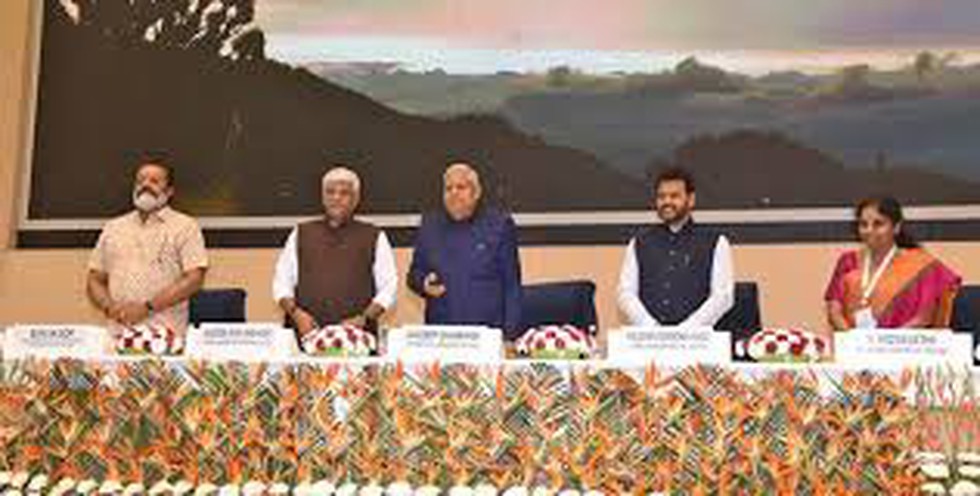
About Paryatan Mitra And Paryatan Didi Initiative:
- The primary aim of this initiative is to elevate the overall experience for tourists in destinations, by having them meet ‘tourist-friendly’ people who are proud Ambassadors and Storytellers for their destination.
- The vision of this initiative is to welcome one and all to experience Incredible India through Incredible Indians, thereby creating a more welcoming, hospitable, and memorable experience for tourists when in India.
- Paryatan Mitra and Paryatan Didi were piloted in six tourist destinations across India: Orchha (Madhya Pradesh), Gandikota (Andhra Pradesh), Bodh Gaya (Bihar), Aizawl (Mizoram), Jodhpur (Rajasthan), and Sri Vijaya Puram (Andaman & Nicobar Islands).
- Features
- Under this special emphasis is being placed on the training of women and youth to enable them to develop new tourism products & experiences like heritage walks, food tours, craft tours, nature treks, homestay experiences, and other innovative tourism products based on the potential of the destination.
- This training is driven by the ‘Athithi Devo Bhava’ philosophye treating tourists as honored guests.
- It is also envisioned that locals leverage these skills to obtain gainful employment going forward as homestay owners, food & cuisine experience providers, cultural guides, natural guides, adventure guides, and other roles in tourism.
- Tourism-specific training is being followed by general training in digital literacy and digital tools to ensure that the experiences they create are discoverable and visible to tourists, nationally and globally.
5. Nanjangud Rasabale Banana
The famed Nanjangud rasabale banana variety, which had become scarce because of a fungal disease, has begun to thrive again.
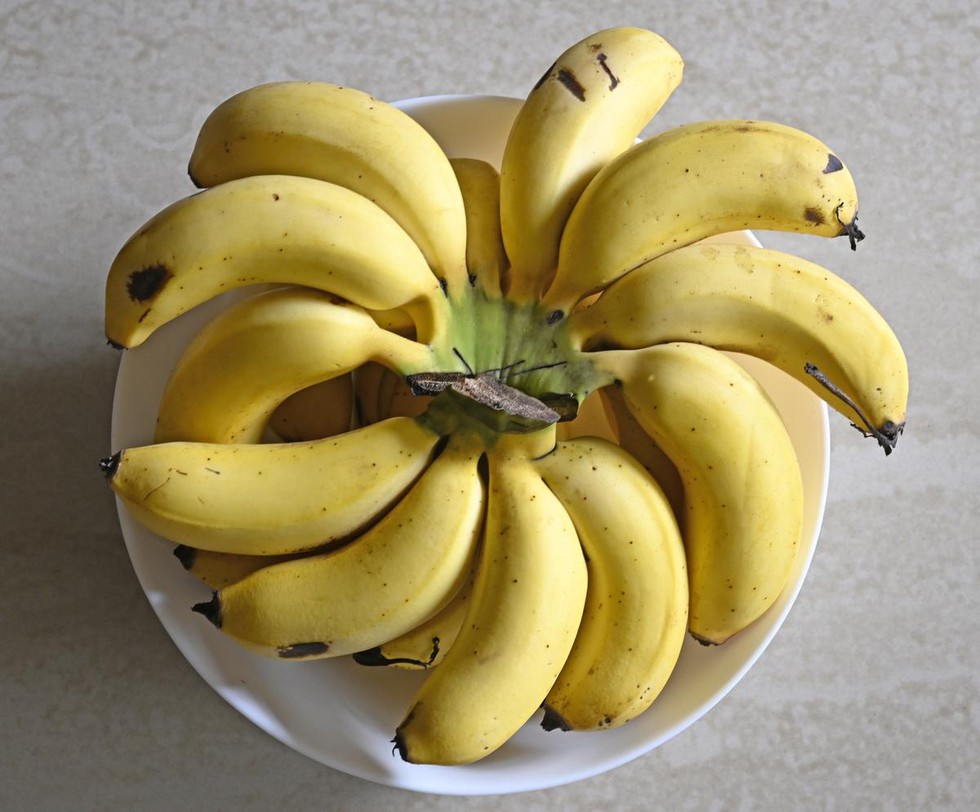
About Nanjangud Rasabale Banana:
- It is a variety of banana grown in and around the Mysore district and Chamarajanagar district of Karnataka.
- It was awarded the Geographical Indication (GI) tag in 2006 for its thick pulp and distinct taste and aroma.
- The taste and pulp of this banana cannot be found in any other variety and anywhere else.
- Soil required: Black clay alluvial saline soil has given a unique aroma to this banana.
- Fruits possess medicinal properties and are believed to cure neurological ailments.
- Threats: The Panama Wilt disease, a fungal infection caused by the Fuserium Wilt pathogen has been the bane of rasabale farmers.
What is the Geographical Indication (GI) tag?
- It is a sign used on products that have a specific geographical origin and possess qualities or a reputation that are due to that origin.
- Geographical Indications are part of the intellectual property rights that comes under the Paris Convention for the Protection of Industrial Property.
- In India, Geographical Indications registration is administered by the Geographical Indications of Goods (Registration and Protection) Act, 1999.
- Geographical indications are typically used for agricultural products, foodstuffs, wine and spirit drinks, handicrafts, and industrial products.
6. What is ‘BRICS’ Grouping?
The Union Ministry of External Affairs recently met with his BRICS counterparts to affirm its role in a multipolar world.
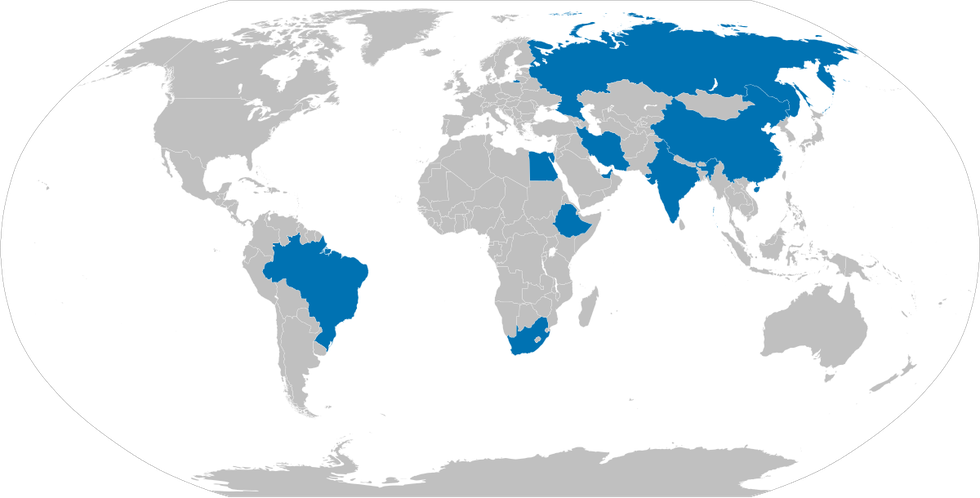
About ‘BRICS’ Grouping:
- BRICS is an acronym for Brazil, Russia, India, China, and South Africa, a bloc of countries that formed a partnership following the creation of the term in 2001 by Goldman Sachs economist Jim O'Neill (but it didn't include South Africa at the time).
- South Africa joined in 2010, making it "BRICS".
- The group was designed to bring together the world's most important developing countries to challenge the political and economic power of the wealthier nations of North America and Western Europe.
- The BRICS countries operate as an organization that seeks to further economic cooperation among member nations and increase their economic and political standing in the world.
- Saudi Arabia, Iran, Ethiopia, the United Arab Emirates, and Egypt joined BRICS in 2024.
- The expanded group has a combined population of about 3.5 billion, or 45% of the world's inhabitants.
- Combined, members' economies are worth more than $28.5tn - about 28% of the global economy.
- With Iran, Saudi Arabia and UAE as members, Brics countries produce about 44% of the world's crude oil.
7. Poumai Naga Tribe
The Poumai Naga tribe of Purul village in Manipur’s Senapati district has taken a significant step towards wildlife conservation by banning hunting, trapping, and killing of wild animals and birds within their territory.
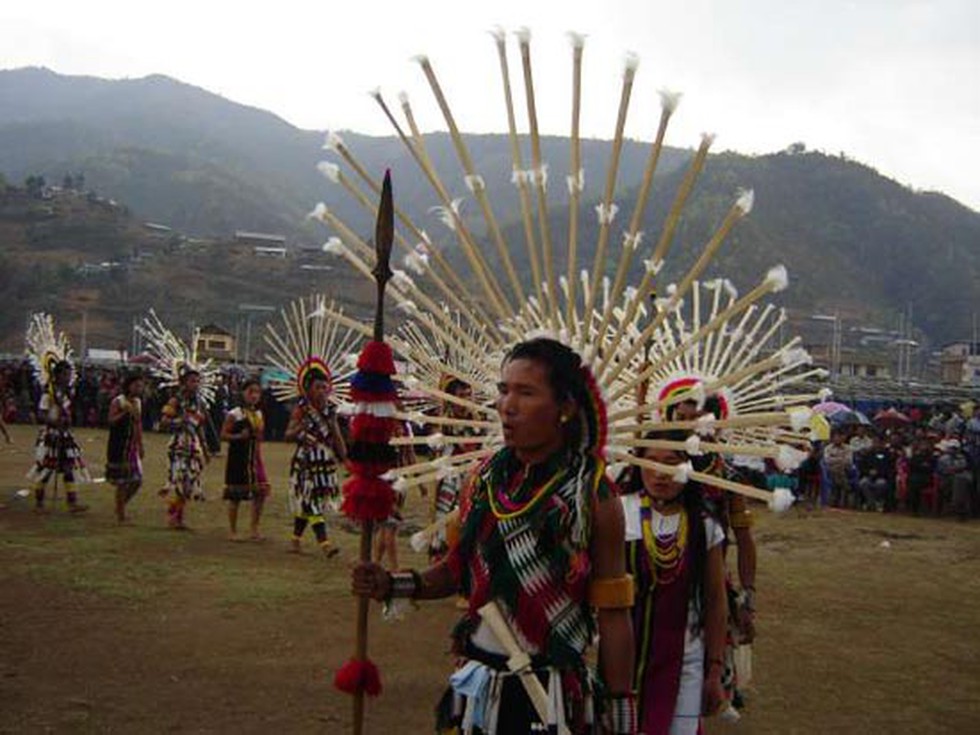
About Poumai Naga Tribe:
- The Poumai Naga tribe is an indigenous ethnic group primarily residing in the Senapati district of Manipur and parts of Nagaland.
- About 95.7% of the total population of Poumai is in the Senapati district, Manipur.
- It is one of the oldest and largest Naga tribes in Manipur.
- The language that Poumai communicates is known as "POULA".
- Christianity is the dominant religion in the Poumai Community.
- Their Pouli (Pottery) and Poutai (Pou salt) production was well known to the entire tribal areas in Manipur and Nagaland in ancient times.
- The main occupation of Poumai Naga is agriculture, and shifting cultivation is hardly practiced now in Poumai villages.
- Popular festivals:
- Paonii, Donii, Laonii, Daonii, Rounii, Duhnii, Loukanii, Thounii, Khiinii, Taithounii, etc.
- Laoniiis one of the important festivals celebrated in Poumai villages after the rice transplantation.
8. What is Marburg Virus Disease?
Six people have died in Rwanda following an outbreak of the Marburg virus, the country’s Health Ministry said recently.

About Marburg Virus Disease:
- MVD, earlier known as Marburg hemorrhagic fever, is a rare but severe hemorrhagic fever that affects both people and non-human primates.
- Causative agent:MVD is caused by the Marburg virus, a genetically unique zoonotic (animal-borne) RNA virus. Marburg and Ebola viruses are both members of the Filoviridae family (filovirus).
- The virus takes its name from the German city of Marburg, where it was first identified in 1967 in a lab where workers had been in contact with infected green monkeys imported from Uganda.
- The reservoir host of the Marburg virus is the African fruit bat, Rousettus aegyptiacus.
- Transmission: The virus can be transmitted from bats to primates, including humans, and then spread through direct contact with blood or other body fluids from infected individuals.
- Symptoms:
- Initial Marburg disease signs and symptoms include Fever, Chills, Headache, Muscle aches, Rash with both flat and raised bumps, often on the torso, Chest pain, Sore throat, Nausea, vomiting, and diarrhea
- As the disease advances, symptoms can become more severe, including liver failure, delirium, shock, bleeding (hemorrhaging), and multi-organ dysfunction.
- Fatality: The average MVD case fatality rate is around 50%. Case fatality rates have varied from 24% to 88% in past outbreaks depending on virus strain and case management.
- Treatment:
- There is no treatment or vaccine for Marburg disease.
- Supportive therapy, such as intravenous fluids, electrolyte replacement, supplemental oxygen, as well as blood and blood products replacement, improves survival.
9. What are Sea Robins?
In a new study, researchers have uncovered new insights into evolutionary adaptations by examining the unusual "walking" abilities of sea robins, bottom-dwelling fish that use leg-like appendages to navigate the ocean floor.

About Sea Robins:
- Sea robins belong to a family of ray-finned fish called Triglids, which inhabit diverse habitats ranging from shallow salt marshes to deep oceans around the world.
- They are found in warm and temperate seas of the world.
- Most Triglidae fish are benthic specialists that spend much of their time on the ocean bottom, where they hunt in the sand for fish, crustaceans, and other invertebrates.
- To facilitate their benthic lifestyle, sea robins have evolved a number of bizarre traits, the most iconic of which are their six leg-like appendages.
- They are elongated fish with armoured bony heads and two dorsal fins.
- Sea Robins get their name from their large wing-like pectoral fins.
- When excited or threatened, the Sea Robin will fan these fins out to look bigger and help it to blend in with the sandy bottom.
- These fins open and close while the fish swims much like a bird in flight.
- Some sea robins are scaly; the bodies of others are covered with bony plates.
- They are usually brightly coloured, and some have ornately patterned pectoral fins.
- They are also vocal and can produce audible soundswith their swim bladders and certain attached muscles.
10. Ratapani Wildlife Sanctuary
The Ratapani Sanctuary is stretching its arms to get the status of a tiger reserve, and the government is serious in this regard.
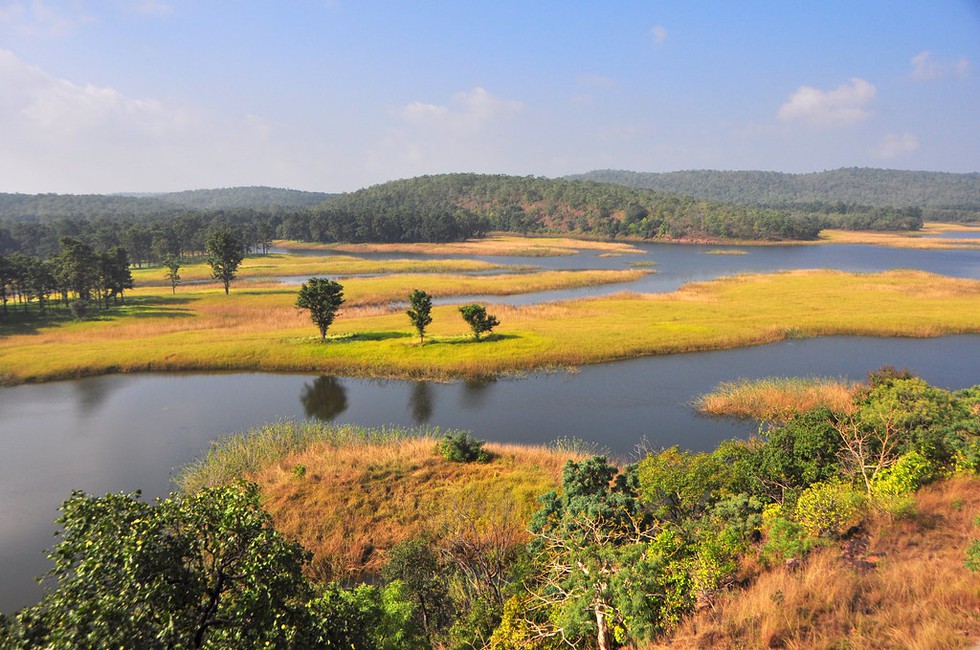
About Ratapani Wildlife Sanctuary:
- Location: Situated in Raisen and Sehore districts of Madhya Pradesh, it spreads over 825.90 sq km.
- This rocky forest with aquatic environment is spread on the Vindhya Hills.
- It runs parallel on the northern side of the Narmada River. The Kolar River forms the western boundary of the Sanctuary.
- The sanctuary has Bhimbetka,a group of rock shelters and rock paintings, which is one of the '' World Heritage Site '' declared by UNESCO.
- It also encompasses many other historical and religious destinations like Ginnourgarh Fort, POW camp, Keri Mahadeo, Ratapani dam, Jholiyapur dam, etc.
- Landscape: It is rugged with hills, valleys, plateaus, and plains.
- Flora:
- The forest of this Sanctuary is of dry deciduous and moist deciduous
- About 55% of the area is covered by teak. The remaining mixed forests consist of various dry deciduous species.
- Fauna:
- The regal striped cat is the apex predator, and estimates suggest that 40 tigers roam these forests.
- Chinkara, an endangered species, is also found in the Sanctuary.
- It is also home to animals like the Panther, Hyena, Jackal, Indian Fox, Wild Dog, Jungle Cat, Small Indian Civet, Blue Bull, Chinkara, Black Buck, Chausingha, Spotted Deer, Barking Deer, etc.


























































































































































.png)
.png)
.png)
.png)
.png)


.png)
.png)
.png)





.png)
.png)






.png)
.png)
.png)
.png)
.png)
.png)
.png)
.png)
.png)

.png)







.png)
.png)


.png)
.png)
.png)


.png)

.png)
.png)





.jpg)

.png)
.png)


.png)

.png)
.png)
.png)

.jpg)

.jpg)


.png)

.png)
.png)
.png)
.png)
.png)
.png)
.png)
.png)
.png)
.png)




.png)

.png)





.png)
.png)
.png)
.png)
.png)
.png)
.png)
.png)
.png)
.png)
.jpg)
.jpg)

.png)
.png)
.png)
.png)
.png)
.png)
.png)
.png)
.png)
.png)
.png)
.png)
.png)
.png)
.png)
.png)
.png)
.png)
.png)
.png)
.png)
.png)



.png)
.png)

.jpg)
.jpg)


.jpg)
.jpg)
.jpg)
.jpg)
.jpg)

.jpg)








.jpg)
.jpg)
.jpg)
.jpg)
.jpg)

















.jpg)
.jpg)







.jpg)


















.jpg)
.jpg)






























































































.jpg)
.jpg)


























.jpg)

.jpg)










.jpg)








.jpg)




.jpg)










.jpg)


















.jpg)












































.jpg)














.jpg)
.jpg)
.jpg)





.jpg)

.jpg)
.jpg)





































































.jpg)


































.jpg)
.jpg)
















































.jpg)












.jpg)


.jpg)




.jpg)
.jpg)
.jpg)

.jpg)
.jpg)
.jpg)
.jpg)

.jpg)
.jpg)
.jpg)

.jpg)
.jpg)
.jpg)
.jpg)
.jpg)
.jpg)
.jpg)
.jpg)

.jpg)


.jpg)
.jpg)
.jpg)
.jpg)
.jpg)
.jpg)
.jpg)
.jpg)
.jpg)
.jpg)











.jpg)
.jpg)





.jpg)
.jpg)
.jpg)
























.jpg)
























.jpg)









.jpg)
.jpg)







.jpg)
.jpg)









































.jpg)
.jpg)
.jpg)
.jpg)
.jpg)

.jpg)
.jpg)
.jpg)
.jpg)
.jpg)


.jpg)
.jpg)
.jpg)
.jpg)
.jpg)

.jpg)
.jpg)
.jpg)
.jpg)
.jpg)
.jpg)
.jpg)
.jpg)
.jpg)
.jpg)
.png)

.png)
.png)

.png)
.png)
.png)
.png)


.jpg)
.jpg)

.jpg)
.jpg)
.jpg)

.png)
.png)
.png)
.png)
.png)
.png)
.png)

.png)
.png)
.png)
.png)
.png)
.png)
.png)
.png)
.png)
.png)





































































-min.png)



.png)




.png)








































